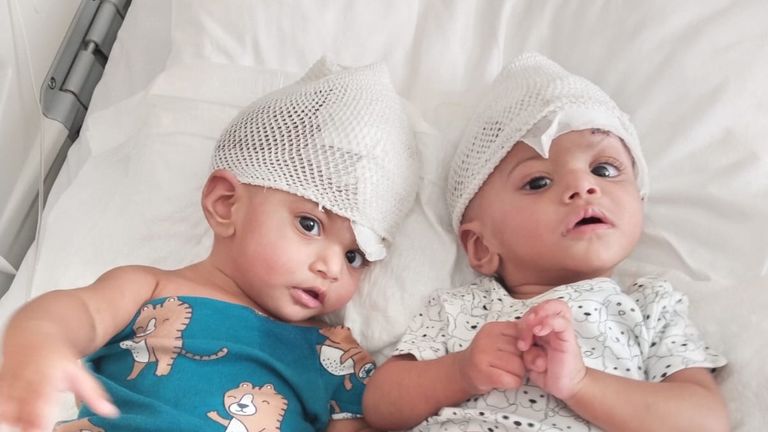One-year-old twin girls, conjoined at the head, have been successfully separated during a 14 hour operation led by a leading British surgeon.
Professor Noor ul Owase Jeelani from Great Ormond Street Hospital used leading mixed reality technology to complete the complex procedure on Minal and Mirha in Turkey.
Both are recovering in hospital and are expected to make full recoveries and lead normal lives when they return home to Pakistan next month.
The operation at the Ankara Bilkent City Hospital on 19 July, which included a local team of medics, required two surgical stages and was completed over three months, with the final surgery taking 14 hours.
The girls, who were born in Pakistan, are called craniopagus twins because they are joined at the head.
They shared vital blood vessels and brain tissue and separation of the pair required extremely intricate surgery.
Mixed reality (MR) combines 3D images with the physical world and is used to increase precision during complex operations. It enhances a surgeon’s view of a patient by mixing digital content – like 3D scans – while remaining in the real world.
A high definition 3D model was created of the twins to help train medics in Ankara on what to expect in the operating theatre, as well as allowing the UK-based team to prepare and rehearse the surgery.
Professor Jeelani said: “The technology developed to undertake this work makes a lot of the more routine surgeries we do, safer, less invasive and more effective.
“To be able to give these girls and their family a new future where they can live independently and enjoy their childhood is a special privilege,” he said.
He has led several surgeries involving conjoined twins including three-year-old boys in Brazil in 2022, one-year-old twin girls in Israel in 2021, and in 2019 twin two-year-old girls from Pakistan.
The work was supported by Gemini Untwined, a charity founded by Mr Jaleeni to raise funds for siblings born joined at the head.
According to Gemini figures, one in 60,000 births results in conjoined twins, and only 5% of these are craniopagus children.
The life expectancy of twins who are not separated is very low. About 40% of twins fused at the head are stillborn or die during labour.

